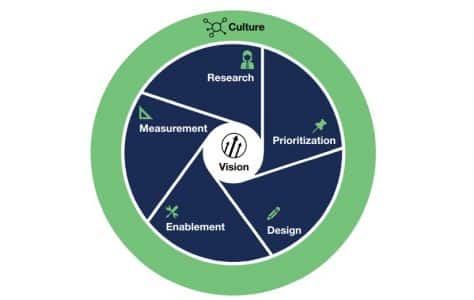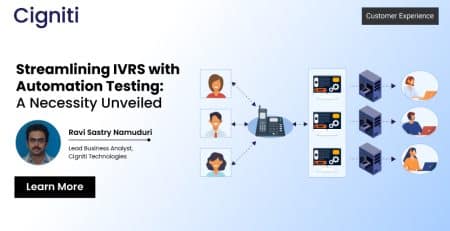Why and How to Lead a Customer Experience Transformation
Being in charge of a customer-experience (CX) transition can be stressful. Many leaders are hesitant to begin because they are intimidated by the numerous hurdles of implementing change across practically every organizational silo. However, this hesitancy poses genuine hazards to the company. COVID-19 has caused significant adjustments in consumer behavior and expectations, prompting businesses to rethink how they connect with and service customers. Those who do not adapt to the new normal will be left behind rapidly. Investing in customer experience during a downturn has a proven track record. Companies that prioritized customer experience during the last economic downturn had three times the shareholder returns of those that did not. Now is the moment to take action.
The first step in transforming your client experience is to agree on a clear definition of the type of experience you intend to provide. When firms set out to establish their customer-experience aspiration, they frequently fall into one of two traps: either the aspiration is vague and unrelated to the company’s mission, or it’s unclear how the aspiration will generate value that can be measured and monitored. If you fall into one of these two traps, your CX transformation program will be unclear and incoherent.
The time has come for businesses to focus on customer experience across industries. Why? Because statistics reveal that excellent customer service is still uncommon. That means there’s a lot of money to be made right now if you can step up and lead a CX revolution for your company.
Source: Forrester Research, Inc.
According to Forrester, companies must develop six competencies around a CX vision: Research, Prioritization, Design, Enablement, Measurement, and Culture.
| Research | Understand your customers thoroughly and share that knowledge with your staff and partners. |
| Prioritization | Concentrate on the most crucial aspects of your customer’s experience and your company’s performance. |
| Design | Define and improve customer experiences based on your vision and research-based knowledge. |
| Enablement | Give employees and partners the tools they need to offer the best possible experience. |
| Measurement | Establish a relationship between the quality of experiences and the organization’s overall metrics. |
| Culture | Create a set of shared values and behaviors that motivate staff to provide excellent customer service. |
Some partners will misunderstand or perhaps oppose the CX transformation. To lead one successfully, you must first gain a thorough grasp of four important areas so that you can gain support by presenting the transition in a clear and compelling manner.
These four major themes are:
- the real business reasons for CX transformation.
- the meaning of important words like CX quality and the CX ecosystem.
- the six abilities that the organization must develop, and
- how disciplined execution affects the reliability of your CX.
To create the framework for CX innovation, a company must look in the mirror and assess how mature it is in each of the CX management capabilities, as well as how much discipline it applies to each.
To figure out which CX competencies you need to improve the most, you’ll need to know how common CX competencies are in your industry and others, where the biggest gaps are, and what’s at stake if you don’t close them.
To plan your transformation, you must go through three processes. First, you must determine how much and how quickly you will convert, which will be determined by your industry and other considerations. Second, you can’t just urge employees to improve customer service; you need to create a CX vision that is linked with your organization’s goal and values to define what “better” means so that everyone practicing the competencies is moving in the same direction. Third, you must establish a roadmap to that destination that will help you decide which activities to pursue and in what order.
What kind of return on investment will your CX efforts provide to your company? If you want to receive funding for your CX transformation, you must answer this question. When you go before your CEO or CFO, you’ll need real numbers that put you on par with everyone else vying for a check from the C-suite. Create a ROI model to collect these figures so you can present them to any level of management and show how improving CX would improve the bottom line.
Some of your skills may be better developed than others. As a result, the best approach is to pursue: 1) the beginner level in those competencies that your company lacks entirely; 2) the intermediate level in those that you already perform but lack consistency; and 3) the advanced level in those where rigor has been achieved but cadence, coordination, or accountability is lacking.
With empowered customers disrupting every business and competitive barrier like manufacturing strength, distribution power, and information mastery crumbling, knowledge of and connection with customers is the only lasting competitive advantage. The dynamics that have ushered us into the age of the customer have sparked a surge in what we’re calling hyper adoption among consumers. Customers enthusiastically adopt new behaviors that were previously unthinkable. Customers are more mobile than ever before, reading more reviews and making more purchases online. As a result, businesses must become customer-obsessed.
Conclusion
You can’t simply tell employees to improve customer service. You’ll need to define “better” so that everyone working on the competencies is on the same page.
Cigniti’s Customer Experience Sentiment Analysis identifies and categorizes end-user feedback to determine (objective and subjective) usability in terms of product and service quality. App store reviews, Twitter, and Facebook dialogues are the key sources of information. Topics, sentiment, feature requests, what works, what doesn’t work, quality issues, and regression issues will all be classified as a result of the analysis.
Here’s how we approach customer experience sentiment analysis:
- Understand the user applications
- Identify the nature and source of downloads
- Analyze the ratings, reviews, conversations, communications across social media
- Profile the users under defined segments
- Create region-specific reports
- Share downloadable links
Need help? Get in touch with our CX experts to know more about why and how to lead a CX transformation.






Leave a Reply